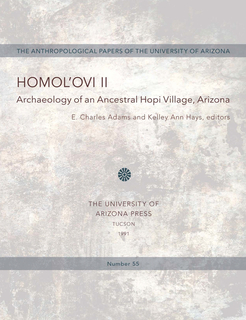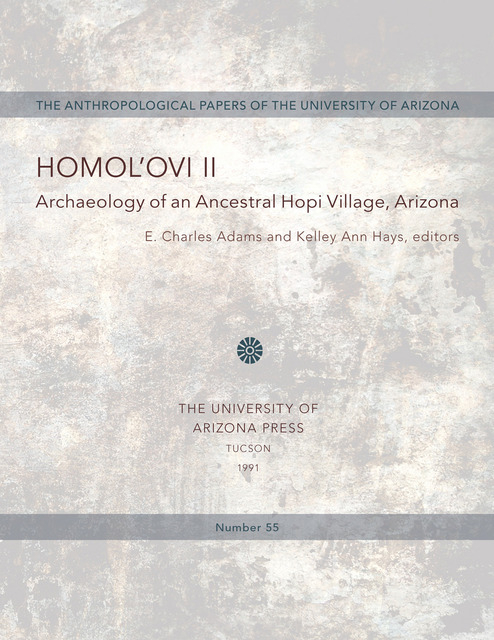Homol'ovi II
Archaeology of an Ancestral Hopi Village, Arizona
Homol'ovi II is a fourteenth-century, ancestral Hopi pueblo with over 700 rooms. Although known by archaeologists since 1896, no systematic excavations were conducted at the pueblo until 1984. This report summarizes the findings of the excavations by the Arizona State Museum of five rooms and an outside activity area, which now form the core of the interpretive program for Homolovi Ruins State Park. The significant findings reported here are that the excavated deposits date between A.D. 1340 and 1400; that nearly all the decorated ceramics during this period were imported from villages on the Hopi Mesas; that cotton was a principal crop which probably formed the basis of Homol'ovi II's participation in regional exchange; that chipped stone was a totally expedient technology in contrast to ground stone which was becoming more diverse; and that the katsina cult was probably present or developing at Homol'ovi II. These findings from the basis for future excavations that should broaden our knowledge of the developments taking place in fourteenth-century Pueblo society connecting the people whom archaeologists term the Anasazi with those calling themselves Hopi.
Texts
Published

Homol'ovi II: Archaeology of an Ancestral Hopi Village, Arizona
by E. Charles Adams, Kelley Ann HaysPublished- This text has 0 annotations
- This text has 0 highlights
Metadata
- isbn978-0-8165-5155-2
- publisherUniversity of Arizona Press
- publisher placeTucson, AZ
- rightsCC BY-NC-ND 4.0
- rights holderUniversity of Arizona Press
We use cookies to analyze our traffic. Please decide if you are willing to accept cookies from our website. You can change this setting anytime in Privacy Settings.


